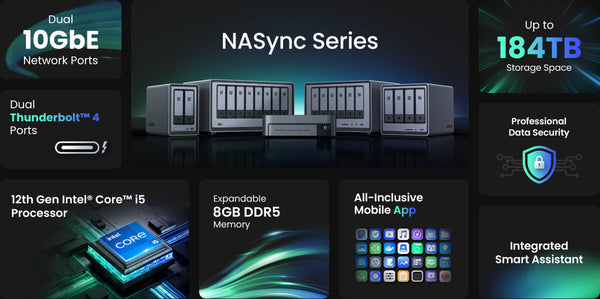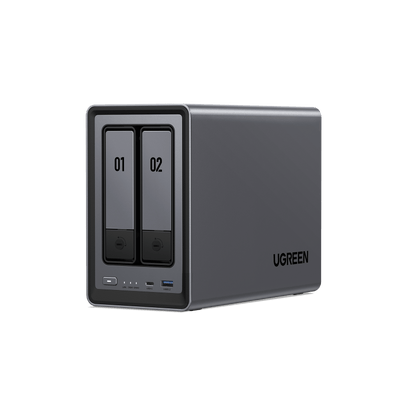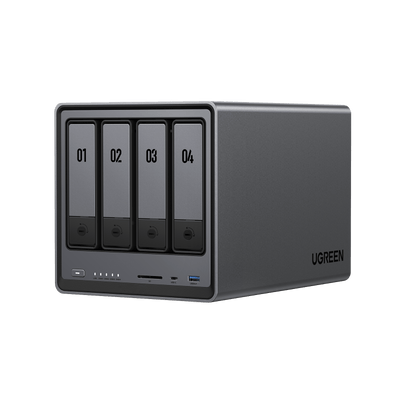Maximize Your NAS Investment: 7 Key Buying Considerations
Buying a NAS device is an important decision as it relates to the security and availability of your data. Before buying a NAS device, you need to consider several aspects to ensure the product meets your needs and offer good value for money. This article will cover 7 aspects you must consider before buying a NAS device.
Does the NAS device have the features you need?
A NAS device can be thought of as a mini computer or server with a wide range of functions. The main functions include storing, backing up and sharing files, as well as storing and sharing photos.NAS devices can also be used as a CCTV server for recording and monitoring, while some users use NAS as a web server, email server, database server or movie server.
In addition to these primary functions, consider the environmental and power consumption aspects. Look for devices with energy-efficient designs to minimize your energy costs and environmental footprint. Some NAS devices come with features like automatic shutdown or sleep modes to reduce power consumption when not in use. Additionally, consider the noise level of the NAS, especially if it will be placed in a home or quiet office environment.
Related Article | Network Attached Storage: Everything Explained.
Which brand should I choose?
If you have decided to buy a NAS device, then you need to consider which brand to choose. There are a number of mainstream NAS brands, and two of the most reputable brands are Synology and QNAP. These two NAS brands have their own features and benefits.
QNAP NAS excels in scalability and hardware configuration, with features such as HDMI output, Thunderbolt, remote control, and 10Gb LAN. It also uses a high-performance CPU and RAM.
In contrast, the performance of Synology NAS is not its main selling point. It doesn't have a top-notch processor or speed, and it has less RAM than QNAP. However, Synology is known for its excellent operating system. Its DSM system is user-friendly, and has better stability than QNAP NAS.
There are many other NAS brands available, such as WD, Huawei, Lenovo, ASUS and Ugreen. Emerging brand Ugreen optimizes its products in hardware configuration and software system. It not only meets the high requirements of professional users, but also offers a minimalist software interaction design, making it easy for beginners to get started. Ugreen NAS has excellent system performance and hardware configuration, with efficient data storage, backup, sharing and remote access functions. Whether it's storing a large number of photos and videos, or securely back up critical files, Ugreen NAS provides reliable support. It is also equipped with an intuitive management interface, making it easy for users to monitor the device, as well as back up and restore files. Ugreen NAS is a great storage solution for regular users and professionals.

How much does it cost to set up NAS?
The cost of setting up NAS depends on a number of factors, including the storage capacity, hardware and software, and personal preferences. The NAS host and hard drives make up a bulk of the costs.
NAS host: NAS devices range from a few hundred dollars to tens of thousands of dollars, depending on the brand, performance, storage capacity and other features. The higher the performance and storage capacity, the higher the price. Some mainstream NAS brands cost several thousand dollars, and can go up to tens of thousands of dollars.
Hard disk drive: NAS needs a specific number of hard disk drives to store data, and different brands and models of hard disk drives fetch different prices. Enterprise hard drives and NAS hard drives are more expensive, but offer higher performance and reliability. Common hard drives are relatively inexpensive and are suitable for individual users and small businesses. Click to read more: What Drives Should I Use for a NAS?
Network equipment and bandwidth costs: NAS requires internet connection for remote access and sharing. It is also necessary to purchase routers, switches or other network equipment, as well as pay a certain amount of network bandwidth costs. This cost depends on the selected network equipment and network provider.
Is setting up NAS complicated?
Setting up NAS is not that difficult; you just need to follow the step-by-step instructions. However, you must be armed with basic IT knowledge, such as an understanding of setup methods for RAID, router, and port forwarding. Once the initial setup has been completed, a reset is no longer required in most cases, unless there are new expansion needs or equipment updates.
While setting up a NAS may require some basic IT knowledge, the ongoing use of the device should be straightforward. Evaluate the user interface and management software of the NAS. A user-friendly interface can significantly simplify the setup and ongoing management of the device. Look for features like mobile apps for remote access and management, as well as intuitive web-based interfaces. Brands like UGREEN NAS storage are known for their minimalist software interaction design, making it easy for both beginners and professionals to get started.
How fast are files read and written in NAS?
Users can back up their files to NAS after setting up NAS. So how fast does NAS read and write files? The first factor depends on the network settings, while the second factor that affects the read/write speed is the hard disk drive. The read/write speed of hard disk drives is about 150-200MB/s. You may wonder, can this speed be increased? The answer is yes, you can use three to four hard disk drives to read and write files at the same time.
Consider the scalability of the NAS device. Can you easily add more storage or upgrade the hardware (e.g., RAM, CPU) if needed? Check if the NAS supports hot-swappable drives, which allow you to replace or add storage without shutting down the device. This flexibility is crucial for future-proofing your storage solution.

Is RAID the equivalent of backup?
Storing files on NAS is not the same as backup, nor is RAID the equivalent of a backup. While NAS provides file storage and sharing functions, it does not offer the same level of data protection.
The hard disk drives on NAS run in RAID mode. RAID stands for redundant array of independent disks, whereby two or more hard disk drives are used to store files simultaneously. RAID improves data reliability and read performance by distributing data across multiple hard drives, but does not provide full data backup capabilities. The hard drives run in RAID mode on NAS. RAID has several levels, such as RAID 1 and RAID 6. Each level has specific characteristics and fault tolerance. A file will be stored on two hard drives at the same time if you use RAID 1. When one of the hard drives fails, the file is still stored on the other hard drive. RAID provides fault tolerance or a safety net for a failed hard drive. If RAID 6 is used, there is fault tolerance for two hard drive failures.
However, it is important to bear in mind that RAID provides fault tolerance for the hard drive, and not a backup of files. All files stored on NAS cannot be recovered if they have been accidentally deleted, and files stored on all hard drives in the RAID group will also be deleted. Thus, simply storing files on NAS does not ensure data security.
Related Blog: What is RAID? Unveiling the Pros and Cons of 15 RAID Configurations!

What are the risks of using NAS?
Every device has risks and NAS is no exception. For example, there is a risk of hard disk failure, NAS system corruption, and hacking as Synology NAS was hacked in 2014. This means that storing files on NAS is not 100% safe. It is advisable to make regular backups of your files after setting up NAS to improve security.
Every device has risks and NAS is no exception. For example, there is a risk of hard disk failure, NAS system corruption, and hacking as Synology NAS was hacked in 2014. This means that storing files on NAS is not 100% safe. It is advisable to make regular backups of your files after setting up NAS to improve security.
Final Words
Considering these factors will help you make an informed buying decision and ensure that your NAS device can provide reliable, efficient and secure data storage services. Remember, there is no such thing as the best NAS option, only the one that works best for you. You will be able to choose a NAS device that meets your needs and budget after taking these factors into consideration.




